
Features
Growing Media
Inputs
Special Series in the rootzone #11: Monitoring fall EC values
August 9, 2012 By Andrew Lee
The climate conditions in the fall provide a vegetative impulse to the crop. To keep the correct generative balance, the irrigation strategy, particularly the drip and slab EC, should be increased. In combination with limiting the irrigation session on dark days and working with a lower slab WC, these actions will enhance generative growth, maximize production and protect fruit quality. These actions will also complement the actions taken in climate and labour management.
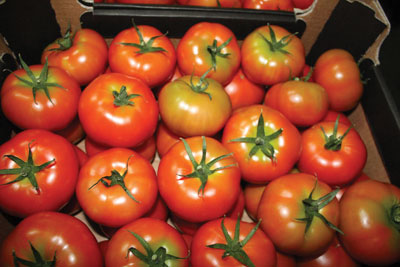 |
|
| Picture 1: Uneven ripening.
|
Irrigation efficiency is an important feature of substrate design for the hi-tech greenhouse sector. Quite simply, it is a feature that determines how the substrate partitions the applied irrigation solution between re-saturation, refreshment (i.e., EC management) and drain.
In the winter and fall, this important design feature allows you to maintain slab WC on a low level with a late start and early stop, yet maintain a stable and controlled substrate EC. Substrates that partition too much of the applied drip solution into re-saturation (i.e., making the slab wetter) will not achieve the required degree of refreshment; growers will find it hard to stabilize EC. The reaction is to oversupply irrigation water, creating excessive drainage, and/or to reduce drip EC – both vegetative actions.
USE PROPORTIONALLY MORE DRAIN SOLUTION
■ The drip EC can be increased by using proportionally more of the drain solution by increasing the “EC pre-setting” on the climate computer (ECs). This strategy, in combination with working with a lower drain per cent, will have the added benefit of gradually emptying the drain basins. This ensures that as far as possible you use all the fertilizer you paid for.
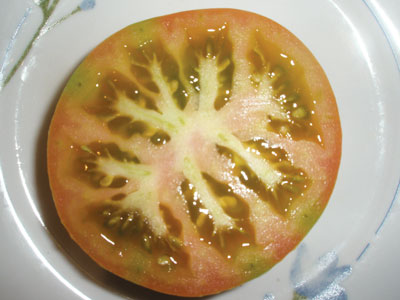 |
|
| Picture 2: Blotchy ripening. |
|
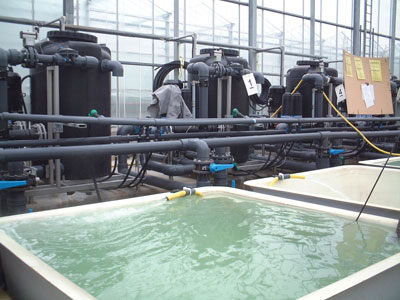 |
|
| Irrigation efficiency is an important feature of substrate effectiveness. |
It will also have the added benefits of reducing fertilizer emission to the environment and enabling easier cleaning of the drain basin during crop turnaround. This strategy also ensures good growth and quality by maintaining the right balance between individual nutrient elements.
Some growers will actually decrease the drip EC in this phase of growth, especially if they cannot stabilize substrate EC in line with reducing the water session. This strategy will make it harder to reuse the drain water and maintain good growth and quality.
Decreasing the drip EC will also lead to undesired changes in the balance between individual elements, particularly nitrogen to potassium (NO3- : K+) in the drip solution, especially if the drain water is recycled. This will be particularly evident if the primary water supply has a high EC (“difficult water”) and a large concentration of bicarbonate (Table 1).
 |
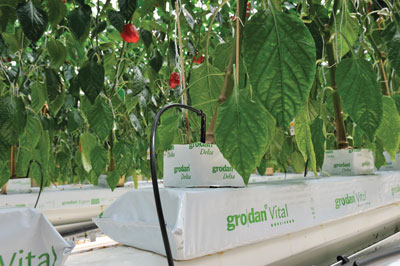 |
|
| Check drippers frequently. |
|
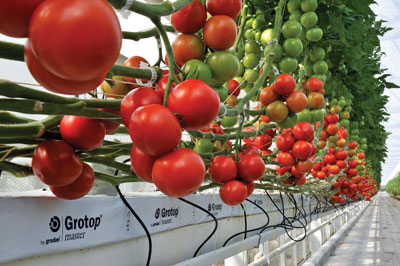 |
|
| Climate conditions in the fall provide a vegetative impulse to the crop.
|
Decreasing the drip EC is often achieved by decreasing the K+ concentration in the drip solution. However, K+ has an important role to play in ensuring top quality fruit by determining the level of sugars as well as the quality of ripening as it is an essential element in the synthesis of lycopene. A lack of K+ even at this stage of production will therefore lead to uneven ripening (Picture 1), blotchy ripening (Picture 2) as well as hollow fruits and lower levels of the desired antioxidant lycopene which many consumers see as being beneficial to their diet.
Between October and December, with low light levels, it is not recommended to decrease the EC in the slab even on sunny days. For example, drip EC at this time should be 3.3 to 3.5 mS for generative steering in tomatoes. Often EC is decreased in the slab by starting irrigation too soon, a reaction that may also lead to more yellow stems. Be patient if the slab EC does increase – do not flush it away; the plant will lower it by itself. Accept a higher slab EC related to the light levels (Table 2).
 |
For pepper and cucumber crops, the minimum drip EC should be 2.8 mS targeting 3.3 to 3.8 mS in the slab. For more information on desired EC targets for the rootzone please see the guidelines in the 6 Phase reference table for your slab choice.
Print this page